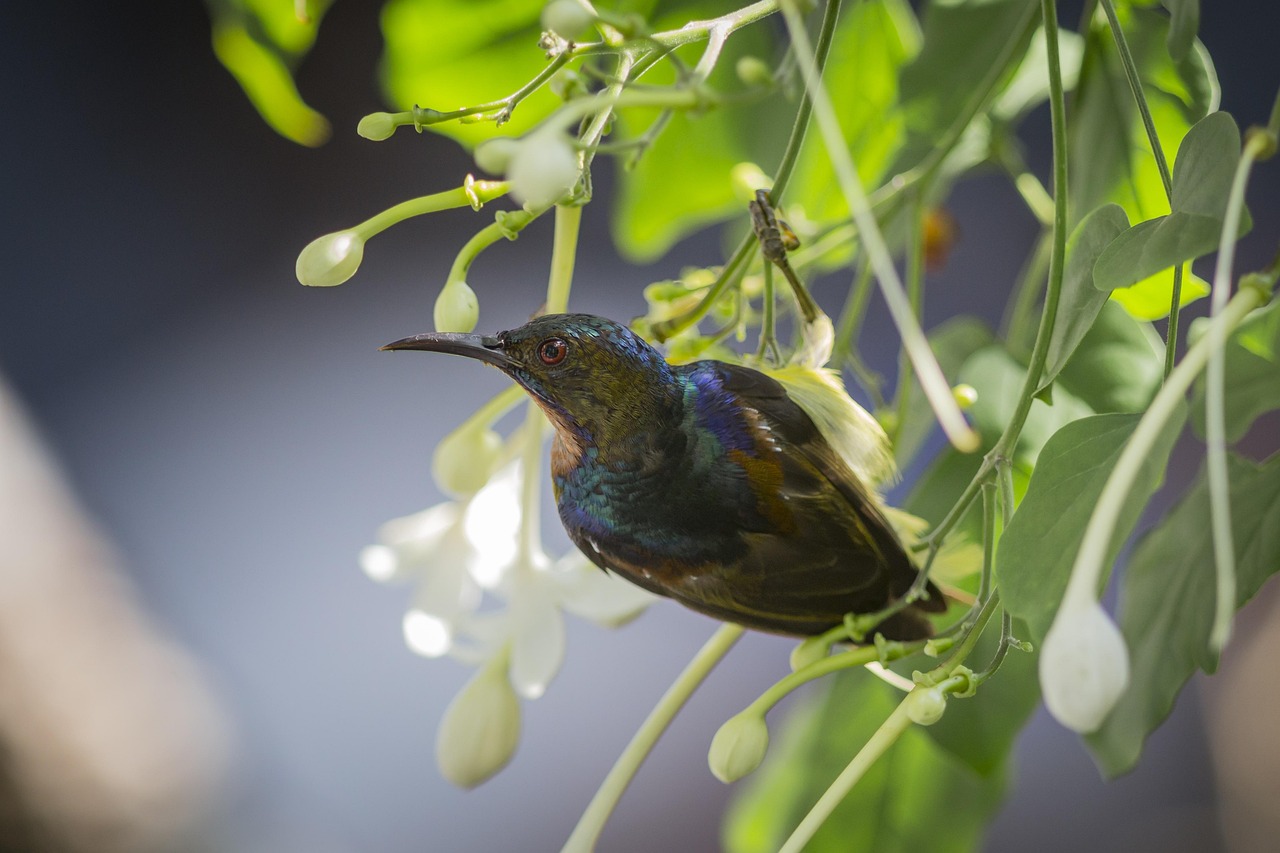Brown-throated Sunbird (Anthreptes malacensis)
The Brown-throated Sunbird is a small, colorful nectar-feeding bird native to Southeast Asia. Males have iridescent plumage, while females are more subdued in color. Often seen darting between flowers, these birds play an essential role in pollination and are commonly found in gardens, parks, forests, and mangroves.
Physical Description
- Size: 13–14 cm (5–5.5 inches)
- Weight: 6–13 g
- Plumage:
- Males:
- Iridescent blue-green crown, nape, and upper back.
- Rich brown throat and chest.
- Yellow belly with an olive-green lower back.
- Females:
- Dull olive-green above, pale yellow below.
- Males:
- Bill: Curved and slender, adapted for nectar feeding.
Habitat & Distribution
- Native to: Southeast Asia, including Thailand, Malaysia, Indonesia, the Philippines, and parts of India.
- Habitat Preferences:
- Found in lowland forests, gardens, parks, and mangroves.
- Often seen in urban areas where flowering plants are abundant.
Behavior & Diet
- Diet: Primarily nectar, but also eats:
- Small insects and spiders.
- Fruits such as berries and figs.
- Important pollinator: Helps fertilize flowers while feeding on nectar.
- Fast & active: Moves quickly between flowers, hovering or perching to feed.
- Often seen in pairs or small groups but not highly social.
Breeding & Nesting
- Breeding Season: Varies by region, often during warmer months.
- Nesting Sites:
- Builds hanging pouch-like nests from plant fibers, suspended from branches.
- Eggs:
- Lays 2–3 tiny eggs, pale with spots.
- Incubation:
- Around 13–15 days, mainly by the female.
- Fledging:
- Chicks leave the nest after 15–20 days.
Threats & Conservation
- Threats:
- Habitat destruction due to urbanization.
- Loss of flowering plants reducing food sources.
- Conservation Status:
- Least Concern (LC) on the IUCN Red List.
- Population is stable due to its adaptability.
Interesting Facts
- Males have iridescent feathers that change color depending on the light.
- Unlike hummingbirds, they do not hover for long and prefer to perch while feeding.
- Their song is a series of high-pitched whistles and chirps, often heard in gardens.
Summary
The Brown-throated Sunbird (Anthreptes malacensis) is a small, vibrant bird commonly found in Southeast Asia’s forests, gardens, and mangroves. Known for its nectar-feeding habits, striking iridescent colors (in males), and role as a pollinator, it thrives in both natural and urban environments. Despite habitat loss, its adaptability ensures stable populations, making it a familiar and cherished sight in tropical regions.
Views: 459
Subscribe to the newsletter:
